![Title: The Ethics of Belief and Beyond, Understanding Mental Normativity. Edited by Sebastian Schmidt and Gerhard Ernst. Top green yellow dark green with "Routledge Studies in Epistemology". Middle white containing title. Bottom with blue rectangle: an "R" with "Routledge",curved part silhouette of human. That’s right, mental normativity: shoulds & shouldn’ts of what we do with our minds, of what our minds should/shouldn’t be. That’s right, think more not less. Think better not worse. To do: developing minds capable of excellently meeting our epistemic responsibilities, our epistemic goals, of instantiating epistemic virtues and avoiding epistemic vices, of producing greater perceptions and conceptions and insights, of regularly improving our capacities to make and understand distinctions, improving daily our capacities to distinguish true from false and distinguish degrees of probable (likely, plausible, feasible, possible, and other terms of evaluation) from improbable (ditto), of growing capacities and abilities of imagining and of thinking, of implementing and instantiating the morally best, most profound, most useful, most reasonable, most satisfying, most humane, set of cognitive values . . .We want, seek, and enjoy mental adventures, we want consequences of our abilities to excellently meet with complexities. This is, of course, not to establish a single focus for mentality, but, we claim, a most important one for us all. Ultimately it’s a profound and permanent balance we seek among memory, passion, … responsibility for our attitudes, reasonableness, rationality, blaming, fearing, deciding, fantasizing, mind-wandering, intentions, evolvings . . . [“Balance?”, you pause. My use of the word resonates with Indigenous sphere (literally, the geometric metaphor and literal meaning) of my Indigenous experience.] And always for best Earth-life for all. (Improving the Universe is where it’s at.) “Bite off more than we can chew!” Not true. Think and imagine again.](https://cdn.bsky.app/img/feed_thumbnail/plain/did:plc:y243snnbr5aopb2qchp3g7ju/bafkreigiass3xc7aziympruceo7wlsvbieqklsn2tjsk3a6rwz6etsohty@jpeg)
Title: The Ethics of Belief and Beyond, Understanding Mental Normativity. Edited by Sebastian Schmidt and Gerhard Ernst. Top green yellow dark green with "Routledge Studies in Epistemology". Middle white containing title. Bottom with blue rectangle: an "R" with "Routledge",curved part silhouette of human. That’s right, mental normativity: shoulds & shouldn’ts of what we do with our minds, of what our minds should/shouldn’t be. That’s right, think more not less. Think better not worse. To do: developing minds capable of excellently meeting our epistemic responsibilities, our epistemic goals, of instantiating epistemic virtues and avoiding epistemic vices, of producing greater perceptions and conceptions and insights, of regularly improving our capacities to make and understand distinctions, improving daily our capacities to distinguish true from false and distinguish degrees of probable (likely, plausible, feasible, possible, and other terms of evaluation) from improbable (ditto), of growing capacities and abilities of imagining and of thinking, of implementing and instantiating the morally best, most profound, most useful, most reasonable, most satisfying, most humane, set of cognitive values . . .We want, seek, and enjoy mental adventures, we want consequences of our abilities to excellently meet with complexities. This is, of course, not to establish a single focus for mentality, but, we claim, a most important one for us all. Ultimately it’s a profound and permanent balance we seek among memory, passion, … responsibility for our attitudes, reasonableness, rationality, blaming, fearing, deciding, fantasizing, mind-wandering, intentions, evolvings . . . [“Balance?”, you pause. My use of the word resonates with Indigenous sphere (literally, the geometric metaphor and literal meaning) of my Indigenous experience.] And always for best Earth-life for all. (Improving the Universe is where it’s at.) “Bite off more than we can chew!” Not true. Think and imagine again.
💙📚 #booksky #bookchallenge #books Choose books that influentially stayed with you in a good way. Just covers.
03.08.2025 13:02 — 👍 4 🔁 0 💬 0 📌 0
“Well, Mr. Deckard,” said Rachel, “why don’t you test me?”
“To see if you’re a replicant? Why?”Deckard was confused.
“Humour me”, said Rachel, playfully. Deckard shrugged, sat down at the table, opened his briefcase, and took out nine photos, three of which contained traffic lights.
31.07.2025 01:13 — 👍 104 🔁 13 💬 6 📌 2

Cover page of a photocopy of a somewhat rare book. Title partially obscured: Lectures and Essays. Author: William Kingdon Clifford, F.R.S. Late Professor of Mathematics and Mechanics in University College, London; and Sometime Fellow of Trinity College, Cambridge. Edited by Leslie Stephen and Sir Frederick Pollock. "La verite est toute pour tous." -- Paul-Louis Courier. In two volumes, vol. 1. Publisher info: London, Macmillan and Co., Limited, New York: The Macmillan Company. 1901. The left page is a vague photo of Clifford, and signed by him "Yours most truly W.K. Clifford. The world needs love, sweet love, but it's not the only thing the world needs now. The second thing the world needs now is sweet epistemology and ethic/morality. Hadot's metaphor: a dynamo bike light in the dark. The turning of the wheel is choice of purpose from a perspective, a choice of a way of life. There is one chapter in Clifford's that by itself could make the book worthy: the ethics of belief. Thinking that something is true (i.e., "belief") can be morally good or bad or in-between as well as epistemically good or bad or in-between. The way we form beliefs, our maintenance of beliefs, the beliefs themselves can be judged reasonably in those terms. We need to recognize how important that is. Clifford antiquely placed too much reliance on consequentialism. We require more these days, and thus Pluralism reveals its value. Equally clearly Clifford points out relevance of proportioning belief to the evidence for community, for humanity, for solidarity (recognition of: human) and that we respect epistemic practices well-implemented and the results thereby.
💙📚 #booksky #bookchallenge #books Choose books that influenced you in a blunt way. Just covers.
01.08.2025 13:17 — 👍 3 🔁 0 💬 0 📌 0
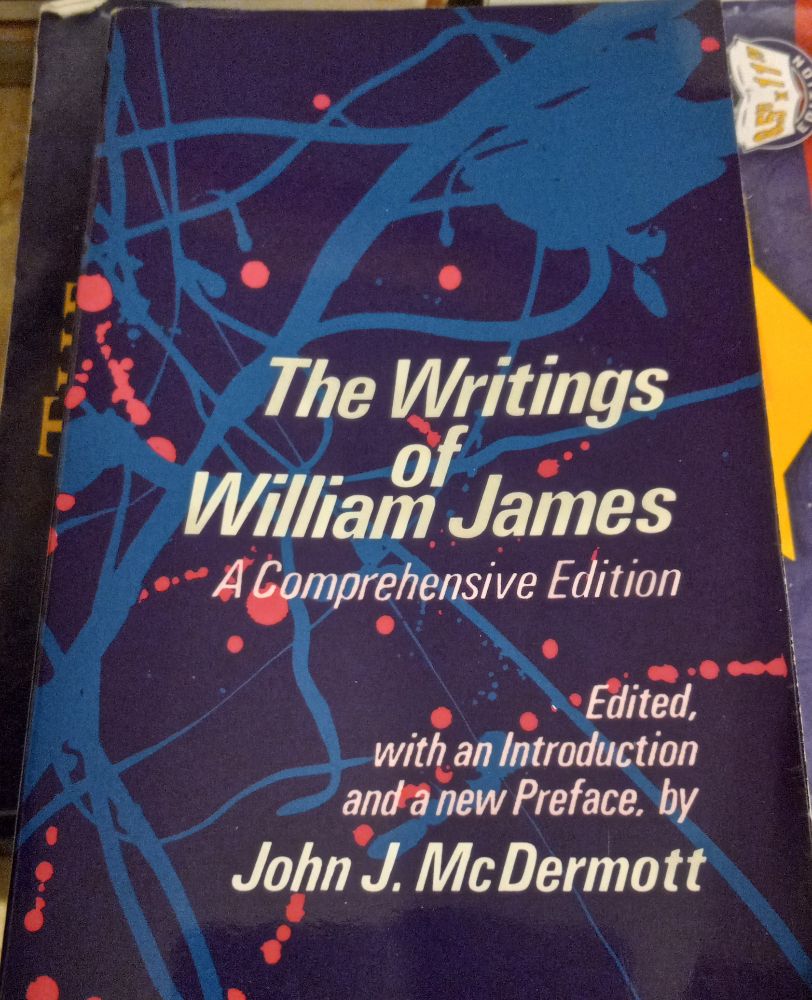
Title: The Writings of William James: a comprehensive edition. Edited, with an Introduction and a new Preface, by John J. McDermott. This paperback, published by University of Chicago Press in 1977, is 858 pages with no index. Furthering its decay it is a gargantuan post-it that now is coming apart in three chunks. The cover is a mysterious mess: dark purple with blue veins or tendons and clumps and red circles like blood drops. No idea what it's all about. A cleverer person than me can explain it. Large amount of topics: pragmatism, pluralism, psychology, autobiography, empiricism, historical topics in philosophy, ethics & morality. (LeGuin's "Omelas" sparked by James' thoughts on morality.) Pluralistic world: excellent. Bootstrap belief in freedom and non-determinism: excellent. Notion of pure experience: not bad. Easy reading: check, because well-written & articulate. Ethics of belief position: occasionally ok, but Clifford is far better reasoned. Ad hominem: upper class James like his bro Henry sometimes annoying as hell; opinions on current (his time) decimation of natives non-existent or allusively demeaning; his opinions on Haymarket event out of touch. But damn, James is a good writer.
💙📚 #booksky #bookchallenge #books Choose books that influenced you in some ways and mostly you have mixed feelings about. Just covers.
29.07.2025 14:42 — 👍 3 🔁 0 💬 0 📌 0
Greatest hits album.
28.07.2025 06:47 — 👍 1 🔁 0 💬 0 📌 0
It's been a long road. I have to admit I haven't read each single word of the 916 or so pages. But much. We all know there's numerous ways to read: slow, slide or glide, outline, spiraling in or out, inner sound, study. (My terms.)
27.07.2025 11:09 — 👍 0 🔁 0 💬 0 📌 0
![Hardback. Spine cover: Collected Papers [of] Charles Sanders Peirce. [Volumes] V Pragmatism and Pragmaticism VI Scientific Metaphysics. [Publisher] Belknap Press Harvard. [Logo is a lion wearing a crown. Why? 1960 publication.] "...[G]rowth comes only from love...", "...by cherishing and tending [my ideas] as I would the flowers in my garden...this is the way mind develops". Thru interactions, life, travelers, brains of travelers, trying to develop minds, to willfully, pragmatically get ourselves beyond obstructions & twisted distortions that sickened some of us. Life and varieties, experiences, pragmatic interactions & involvements, operational pluralism, cognitive values, adaptations, flexibility, adjustments, readjustments. Challenge: we're fallible. Treatment: multanimity, pluralism, moral & epistemic good, democracy, comportement in daily life. Peirce reminds us things would "behave" generally, in general, in specific ways in the course of experience, according to a kind of critical common-sensism. Pragmaticists with minds open to learning to "distinguish accurately between truth and falsity, probability and improbability", because they recognize their thinking "lies in a conditional resolve" and also that learning the truth is the way to satisfy the wishes of our innermost. We're attentive to matters of "everyday facts which critical common-sensism takes into account". There is a "close affinity between thinking in particular and endeavour in general".](https://cdn.bsky.app/img/feed_thumbnail/plain/did:plc:y243snnbr5aopb2qchp3g7ju/bafkreighb2wxiqzbk4dcybrunch5fm3qzdvaf6snafnubqsep6xvyqdmcy@jpeg)
Hardback. Spine cover: Collected Papers [of] Charles Sanders Peirce. [Volumes] V Pragmatism and Pragmaticism VI Scientific Metaphysics. [Publisher] Belknap Press Harvard. [Logo is a lion wearing a crown. Why? 1960 publication.] "...[G]rowth comes only from love...", "...by cherishing and tending [my ideas] as I would the flowers in my garden...this is the way mind develops". Thru interactions, life, travelers, brains of travelers, trying to develop minds, to willfully, pragmatically get ourselves beyond obstructions & twisted distortions that sickened some of us. Life and varieties, experiences, pragmatic interactions & involvements, operational pluralism, cognitive values, adaptations, flexibility, adjustments, readjustments. Challenge: we're fallible. Treatment: multanimity, pluralism, moral & epistemic good, democracy, comportement in daily life. Peirce reminds us things would "behave" generally, in general, in specific ways in the course of experience, according to a kind of critical common-sensism. Pragmaticists with minds open to learning to "distinguish accurately between truth and falsity, probability and improbability", because they recognize their thinking "lies in a conditional resolve" and also that learning the truth is the way to satisfy the wishes of our innermost. We're attentive to matters of "everyday facts which critical common-sensism takes into account". There is a "close affinity between thinking in particular and endeavour in general".
💙📚 #booksky #bookchallenge #books Choose books that influenced you or stayed with you or became part of a process to achieve a well-lived life. Just covers.
This one's about 916 pages.
27.07.2025 10:57 — 👍 6 🔁 0 💬 2 📌 0
![Cheap paperback published in January 1959 by Bantam books. However, it was well-made; it was not glued; it was sewn. [It was a pleasure to read without the book falling into separate chunks.] The author's name: Simenon. (Remarkable in that only his last name is given.) Above the author's name is "Europe's most celebrated mystery writer". [More celebrated than Christie?] Underneath author's name: "Meet Inspector Maigret, the toughest, smartest, most relentless French manhunter of all time, in one of his greatest cases". Title: No Vacation For Maigret. There is a picture of a heavy set man with mustache, hat in right hand, handkerchief in left, black vest, white socks; presumably Maigret. [Doesn't look at all like the real Maigret, i.e., Bruno Cremer. That was a joke.] Overall, the cover is divided into one large square and two rectangles. The square is black with a splash of red blood. The left rectangle is a cityscape, a narrow street, a crowd of onlookers, a dead woman in a red dress laying on the street. [Not much relation to the story if memory serves.] The right white rectangle contains most of the above-mentioned figure of a man. Rectangle also contains the words "A Bantam Mystery" followed by Bantam's logo, picture of a bantam of course.](https://cdn.bsky.app/img/feed_thumbnail/plain/did:plc:y243snnbr5aopb2qchp3g7ju/bafkreibe7x5kfyvfboqf5awk4v5exc67zeypc2guu7jsyten4at36vbltm@jpeg)
Cheap paperback published in January 1959 by Bantam books. However, it was well-made; it was not glued; it was sewn. [It was a pleasure to read without the book falling into separate chunks.] The author's name: Simenon. (Remarkable in that only his last name is given.) Above the author's name is "Europe's most celebrated mystery writer". [More celebrated than Christie?] Underneath author's name: "Meet Inspector Maigret, the toughest, smartest, most relentless French manhunter of all time, in one of his greatest cases". Title: No Vacation For Maigret. There is a picture of a heavy set man with mustache, hat in right hand, handkerchief in left, black vest, white socks; presumably Maigret. [Doesn't look at all like the real Maigret, i.e., Bruno Cremer. That was a joke.] Overall, the cover is divided into one large square and two rectangles. The square is black with a splash of red blood. The left rectangle is a cityscape, a narrow street, a crowd of onlookers, a dead woman in a red dress laying on the street. [Not much relation to the story if memory serves.] The right white rectangle contains most of the above-mentioned figure of a man. Rectangle also contains the words "A Bantam Mystery" followed by Bantam's logo, picture of a bantam of course.

From the inside of the Simenon book No Vacation for Maigret. The important point is the middle showing that the cheap paperback was not glued but sewn.
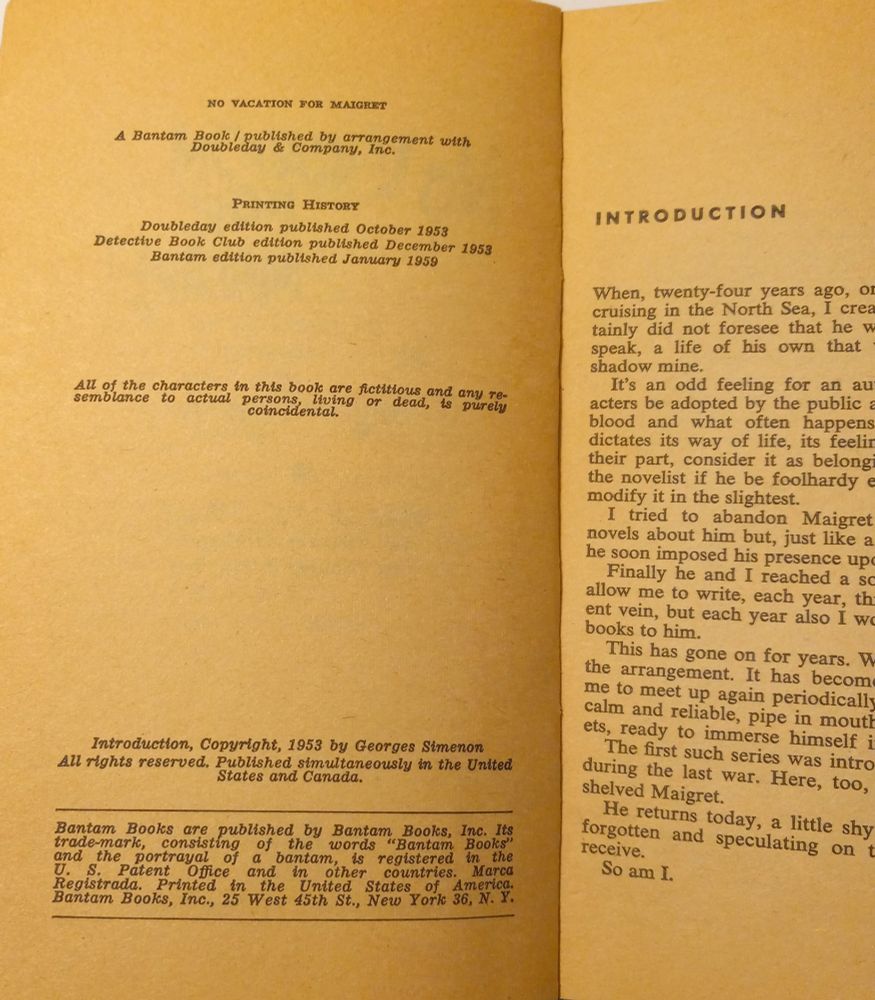
The book's information page. Under the section "Printing History" the last line indicates this particular copy was published January 1959. The pages have yellowed due to age. However, it was a pleasure to read because it was not a glued book. It was sewn. It was bought at a library sale for 25 cents a few years ago. A curious edition it is: there were two points in the book where, from one paragraph to an immediately following paragraph (without break), the scene startingly and confusedly changed from one location in town to another. Different characters and so on. Intentional? I'll need to compare to the French edition, which I probably have.
💙📚
#bookchallenge
#booksky
Post 20 books you've read that are made better than post-its.
24.07.2025 15:47 — 👍 1 🔁 0 💬 0 📌 0
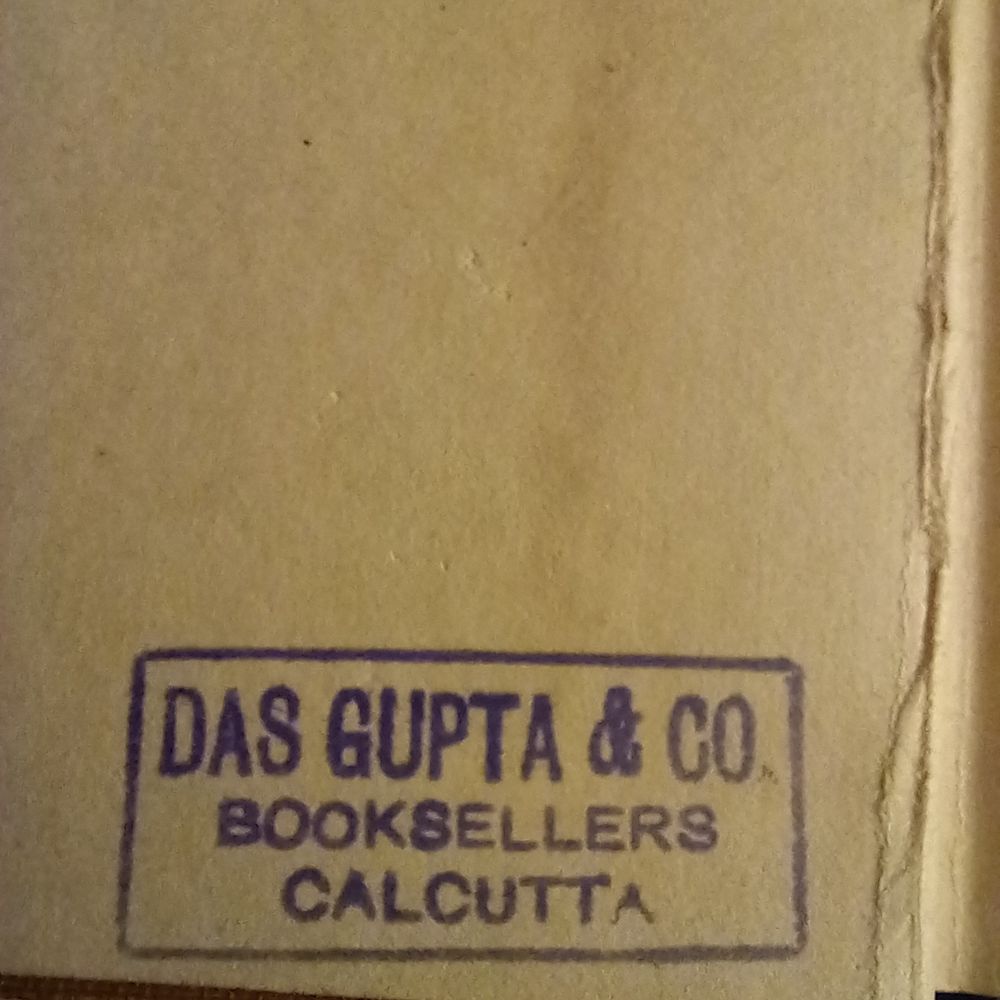
💙📚
#bookchallenge
#booksky
Speaking of traveling, a stamp from 40 years ago
24.07.2025 15:04 — 👍 4 🔁 0 💬 0 📌 0
Or Boston maybe.
20.07.2025 12:15 — 👍 1 🔁 0 💬 1 📌 0
I know those seats. I've sat in them somewhere.
20.07.2025 12:13 — 👍 1 🔁 0 💬 1 📌 0
![Paperback cover, a purplish yellow gold horizon, gray black water, larger and smaller sailboat, rocks on shore, someone in gray brown long coat and walking stick arriving, man in suit and hat greeting, two children playing, woman seated. The Mind of the Traveler: from Gilgamesh to global tourism. Author: Eric J. Leed. About this mind we should develop, in response to what, & what to do with it? Everyone is restless at the beginning of development, wanders around, curious. Vaguely enough, we travel thru interactions. Observations, size up a situation, interpretations, practical difficulties, practical reasoning, flexibility, appreciative of diversity, variety of what we experience, constant changes and differences, adaptations, adjustments, flexibility, re-adjustments, interpretations, adjudgment, appraisal, evaluation. "Conditions are never completely fixed...they are in process..." [Dewey] Necessary to see far, Alain suggests. The eye made to see horizon, starry nightsky, the far and wide. Hold perspective & the eye relaxes, mind & brain relax. There're some constants. Flexibility without instability, without insecurity. Most travel is hardly momentous. Sometimes intense-ish, as "arrival" indicates. Travel a mile, a million, see same things, stop here, there. Details. Same as always? They're new, more so. There's a sort of wandering requiring great flexibility, respect, appreciation, the humane, fortitude, enjoyment, delight, the humane. Byways, alleys, benches, persons, vulnerabilities, experiences, perspectives, constants, variables. Matured. Travel on in mind, broader skies, variety, interest, the this here, the that there, infinite in-betweens, us. Easy to get enthusiastic and grab for the sweeping upshots and worn words. Oh well. We try, don't we? Give it a shot.](https://cdn.bsky.app/img/feed_thumbnail/plain/did:plc:y243snnbr5aopb2qchp3g7ju/bafkreifwklq7cn62k5p5tvduao33anfhvtsj3owlmy4vnklplxsxrjzpz4@jpeg)
Paperback cover, a purplish yellow gold horizon, gray black water, larger and smaller sailboat, rocks on shore, someone in gray brown long coat and walking stick arriving, man in suit and hat greeting, two children playing, woman seated. The Mind of the Traveler: from Gilgamesh to global tourism. Author: Eric J. Leed. About this mind we should develop, in response to what, & what to do with it? Everyone is restless at the beginning of development, wanders around, curious. Vaguely enough, we travel thru interactions. Observations, size up a situation, interpretations, practical difficulties, practical reasoning, flexibility, appreciative of diversity, variety of what we experience, constant changes and differences, adaptations, adjustments, flexibility, re-adjustments, interpretations, adjudgment, appraisal, evaluation. "Conditions are never completely fixed...they are in process..." [Dewey] Necessary to see far, Alain suggests. The eye made to see horizon, starry nightsky, the far and wide. Hold perspective & the eye relaxes, mind & brain relax. There're some constants. Flexibility without instability, without insecurity. Most travel is hardly momentous. Sometimes intense-ish, as "arrival" indicates. Travel a mile, a million, see same things, stop here, there. Details. Same as always? They're new, more so. There's a sort of wandering requiring great flexibility, respect, appreciation, the humane, fortitude, enjoyment, delight, the humane. Byways, alleys, benches, persons, vulnerabilities, experiences, perspectives, constants, variables. Matured. Travel on in mind, broader skies, variety, interest, the this here, the that there, infinite in-betweens, us. Easy to get enthusiastic and grab for the sweeping upshots and worn words. Oh well. We try, don't we? Give it a shot.
💙📚
#bookchallenge
#booksky
20.07.2025 12:03 — 👍 5 🔁 0 💬 0 📌 0
(A friend told me this joke so don't blame me.) Descartes & a friend walk into a bar. His friend orders wine. Barkeeper looks expectantly at Descartes. Finally Descartes says "I don't drink" and disappears.
14.07.2025 01:34 — 👍 1 🔁 2 💬 0 📌 0
You could take a look at the APA newsletters relevant to this. There are some biblios. Relatively recent (late 90s) in academia, it still has a presence.
14.07.2025 01:20 — 👍 1 🔁 0 💬 0 📌 0
S1 was and maybe still is recently available on plain youtube.
12.07.2025 18:33 — 👍 1 🔁 0 💬 0 📌 0
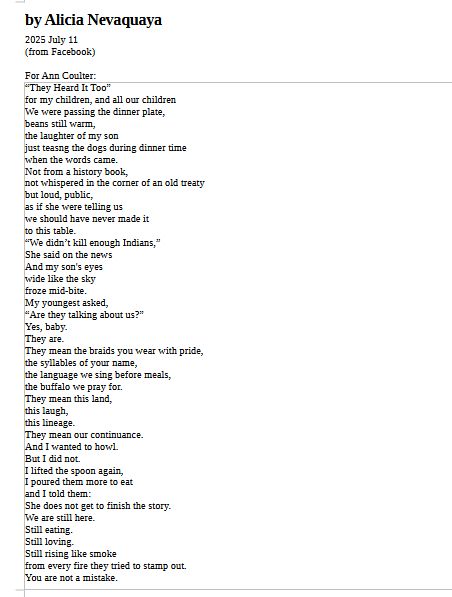
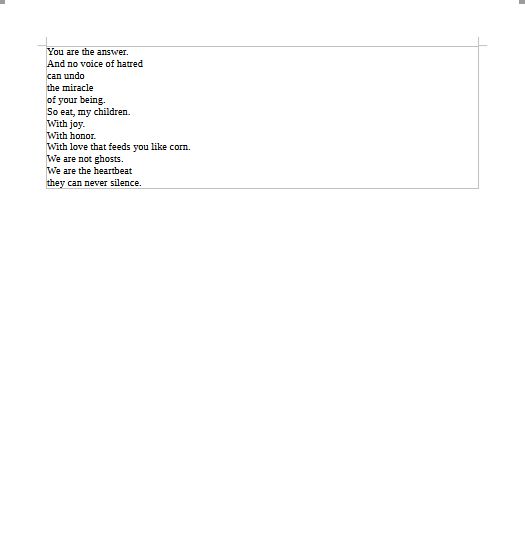 11.07.2025 22:50 — 👍 1 🔁 0 💬 0 📌 0
11.07.2025 22:50 — 👍 1 🔁 0 💬 0 📌 0
Recently, my book THEY CALLED US ENEMY was banned – again – in Tennessee. Book bans are out of control. Huge parts of American history are being restricted. To join me in standing up for the freedom to read, go to pen.org/action. @penamerica.bsky.social @topshelfcomix.bsky.social @idwpublishing.com
11.07.2025 21:05 — 👍 37510 🔁 13611 💬 1265 📌 775
once again the starter pack
go.bsky.app/2Fq4P6e
11.07.2025 21:22 — 👍 106 🔁 44 💬 5 📌 6
Agreed!
10.07.2025 23:16 — 👍 1 🔁 0 💬 0 📌 0
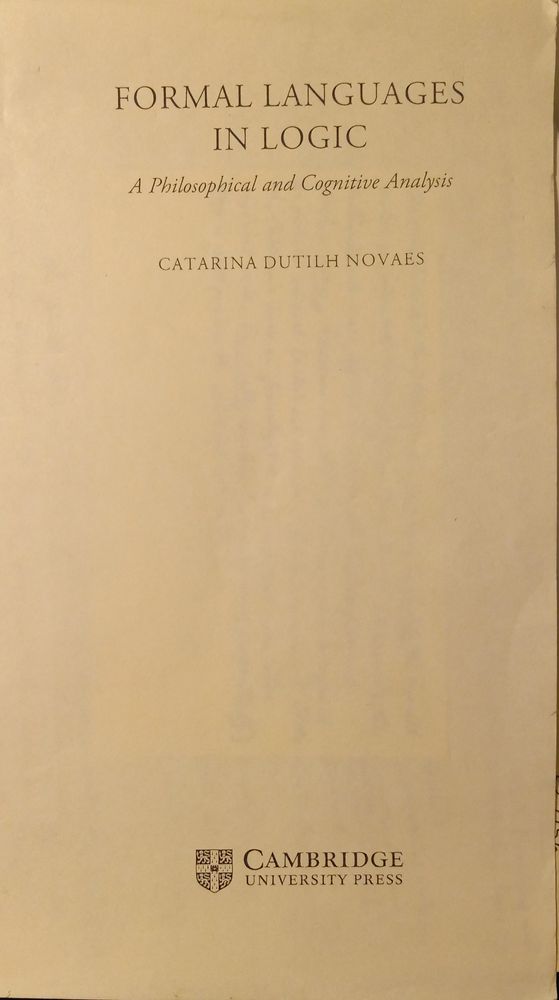
Title: Formal Languages in Logic: a philosophical and cognitive analysis. Author: Catarina Dutilh Novaes. Publisher: Cambridge University Press. Consciousness, explicitness, a deliberate intention to form a mind: a capacity for mentally accessing abstract entities. One purpose is to enable you to adjust and inform your deliberations. Consciousness, reason, intellect, and intelligence -- a mind -- to pragmatically best flexibly adjust to changes and situations. A clear benefit is the de-biasing effect in scientific contexts (and ordinary contexts also). There's skill creation: an ability to make and understand distinctions, important for reading and understanding (& dealing with letters, symbols, digits). Ability to think abstractly is a fundamental element in us and essential to mature thinking.

Red paperback cover, a used book starting to come apart at the corners. There's a yellow representation of, probably, a beret and round eyeglasses. The glasses are directed toward the author's name: Philip A. Cowan. Perhaps it represents Piaget himself gazing at an author who wrote about him. Title: PIAGET with feeling: Cognitive, Social, and Emotional Dimensions. There is a representation of a bicycle underneath the title. Perhaps we're meant to imagine it is Piaget riding the bicycle, his body made up of various letters. That would be an "abstract" representation I suppose. The bicycle is "schematic", a bit abstract. The word "PIAGET" seems to be composed of nested letters, ranging from three deep to perhaps five deep. But what about the point of all this? The ability to think abstractly is a mark of maturity. It is necessary to flexibly and intelligently adapt and adjust to changes and situations. Developing this sort of self-reliance yields means to deal with fear, stress, hostility, individuation, deliberations. Some say with all this we have a better chance with personality, psychology development, and successful democracy.
💙📚
#bookchallenge
#booksky
10.07.2025 23:11 — 👍 5 🔁 0 💬 1 📌 0
![Hardback cover shades of brown, white, and yellowishness (?). Title: Modalities: Philosophical Essays. Author: Ruth Barcan Marcus. Picture in center square is of installation by Eva Hesse called "Contingent 1969". There are 8 panels cheesecloth, latex, fibreglass; National Gallery of Australia, Canberra. A particular concept from a few of the essays (primary focus logic by a venerable icon & mentor who passed on a little over a decade ago) leads to conceptions, articulation, construction of self distinct from rest of reality concerns the kind of person myself has to be IF there is to be any such person as myself. I can develop the essential attribution of being disposed in character "to act rightly [and not] merely act rightly out of expediency or the like", and of being disposed in mind to distinguish true (or the like) from false (or the like). The essential attribute is not artificial but it is constructed. It's physical property but not a "natural" one in the sense of being wholly individuative of what kind of thing I am. It's "partially definitive" of what kind of person I am. Constructed, not invented arbitrarily, henceforth necessary IF I am to be the kind of person I am. "Philosophical", not "natural", in that it involves choices about best way to live.](https://cdn.bsky.app/img/feed_thumbnail/plain/did:plc:y243snnbr5aopb2qchp3g7ju/bafkreibddkhrfjx766hndvya2kpzynaolhrgync6n4wygomzgusc4z6hsm@jpeg)
Hardback cover shades of brown, white, and yellowishness (?). Title: Modalities: Philosophical Essays. Author: Ruth Barcan Marcus. Picture in center square is of installation by Eva Hesse called "Contingent 1969". There are 8 panels cheesecloth, latex, fibreglass; National Gallery of Australia, Canberra. A particular concept from a few of the essays (primary focus logic by a venerable icon & mentor who passed on a little over a decade ago) leads to conceptions, articulation, construction of self distinct from rest of reality concerns the kind of person myself has to be IF there is to be any such person as myself. I can develop the essential attribution of being disposed in character "to act rightly [and not] merely act rightly out of expediency or the like", and of being disposed in mind to distinguish true (or the like) from false (or the like). The essential attribute is not artificial but it is constructed. It's physical property but not a "natural" one in the sense of being wholly individuative of what kind of thing I am. It's "partially definitive" of what kind of person I am. Constructed, not invented arbitrarily, henceforth necessary IF I am to be the kind of person I am. "Philosophical", not "natural", in that it involves choices about best way to live.

Hardback cover brown, pale yellow, of a very well-made 53 year old book (infinitely distant from current post-it glued books that fall into chunks in little time). Title in "italics": Sameness and Substance. Author: David Wiggins. The rectangle also contains a circle divided into quarters with a thin line dividing the quarters. In each quarter is a yellowish rounded triangle like a modified protractor. Another rounded triangle within. To distinguish myself by my choice of manner of living, that is to say how to orient myself philosophically, to construct a sort of necessity in the specific sense that if there is to be any such thing as myself, I have to be (must be) a specific kind of thing. And so we intend to try to create, bring into existence, partially individuative essential properties (each one of us takes it upon ourselves) henceforth necessary in the sense just mentioned. These the ongoing processes of development into and maintenance of who we are in this life.
![Paperback mainly black cover. Author: Timothy Williamson. [In dark white shade.] Title: Modal Logic as Metaphysics. [In shades of blue.] "The cover design based on an idea by Miroslava Andjelkovic" says the back cover. [Is the design Miroslava's idea? Or is Miroslava's idea separate from the design?] The figure in different shades of gray or white is probably a combination of two logic symbols. The brighter shaded symbol resembling a 2-pronged anchor is probably what the ancients (from 1930s) called "fishhook". Doesn't seem to be used much anymore but its meaning (with different symbolizations) is ubiquitous: necessarily (strictly) implies. (Relevance: modal logics developed out of a focus on what's necessary and what's possible. Mathematics and Philosophy have been siblings for thousands of years, and it was the concern of one of the siblings to make sense of the other's typical way of thinking, to get clear exactly on why that way worked so well for understanding and doing things, such as figuring out the area of a truncated pyramid before we begin building one next to our river. "I mean, how many bricks are we looking at here Imhotep?" And then adapt the thinking to a general approach toward increasing our knowledge and understanding of many other areas of life. For example, Socrates using one tool to uncover ethical truths.) The relatively darker shaded figure seems to be the greek letter lambda. In this book, and typically a lot of formal places, lambda symbolizes an operation that keeps a variable open for input while we focus on a process, so to speak, or, perhaps in other words indicates a condition or a property. There are different ways of making sense of it. And what of the metaphysics part? Is what is essentially necessary (had to be) or not? And do not add anything specific or particular or concrete to that question. Observe it in its abstract glory. So to speak.](https://cdn.bsky.app/img/feed_thumbnail/plain/did:plc:y243snnbr5aopb2qchp3g7ju/bafkreifnwhy67hkmdsmtq4v25wncphq2h2m75ve5uj5pieurgckpckluqm@jpeg)
Paperback mainly black cover. Author: Timothy Williamson. [In dark white shade.] Title: Modal Logic as Metaphysics. [In shades of blue.] "The cover design based on an idea by Miroslava Andjelkovic" says the back cover. [Is the design Miroslava's idea? Or is Miroslava's idea separate from the design?] The figure in different shades of gray or white is probably a combination of two logic symbols. The brighter shaded symbol resembling a 2-pronged anchor is probably what the ancients (from 1930s) called "fishhook". Doesn't seem to be used much anymore but its meaning (with different symbolizations) is ubiquitous: necessarily (strictly) implies. (Relevance: modal logics developed out of a focus on what's necessary and what's possible. Mathematics and Philosophy have been siblings for thousands of years, and it was the concern of one of the siblings to make sense of the other's typical way of thinking, to get clear exactly on why that way worked so well for understanding and doing things, such as figuring out the area of a truncated pyramid before we begin building one next to our river. "I mean, how many bricks are we looking at here Imhotep?" And then adapt the thinking to a general approach toward increasing our knowledge and understanding of many other areas of life. For example, Socrates using one tool to uncover ethical truths.) The relatively darker shaded figure seems to be the greek letter lambda. In this book, and typically a lot of formal places, lambda symbolizes an operation that keeps a variable open for input while we focus on a process, so to speak, or, perhaps in other words indicates a condition or a property. There are different ways of making sense of it. And what of the metaphysics part? Is what is essentially necessary (had to be) or not? And do not add anything specific or particular or concrete to that question. Observe it in its abstract glory. So to speak.
💙📚
#bookchallenge
#booksky
05.07.2025 17:03 — 👍 4 🔁 0 💬 0 📌 0
Cue up Star Trek's Guardian of Forever voice: in the labyrinth there are many such dead ends.
03.07.2025 15:31 — 👍 1 🔁 0 💬 0 📌 0
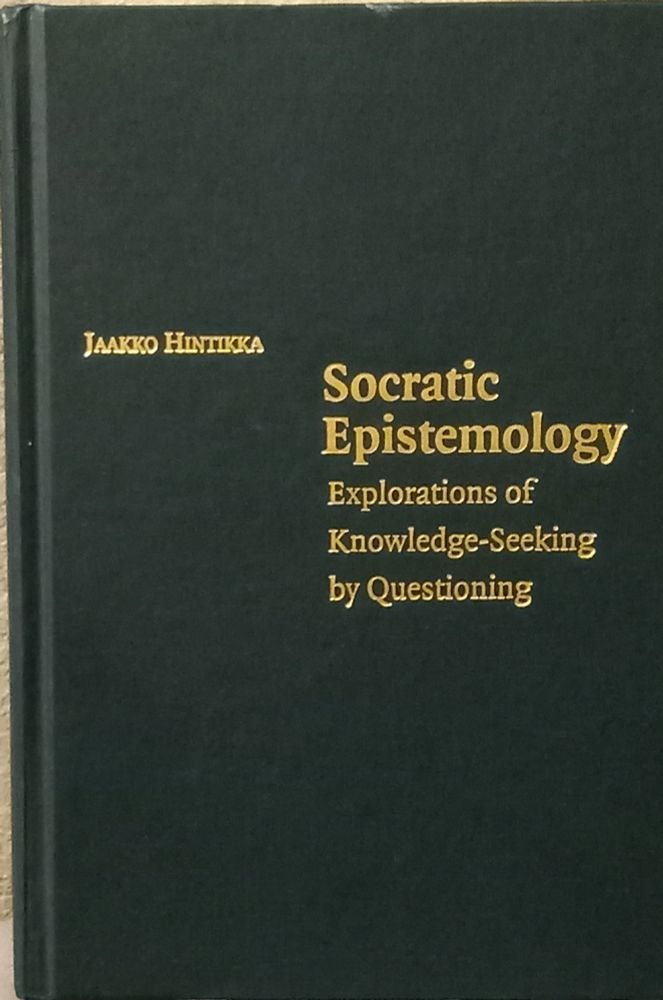
Plain green hardback, gold lettering. Author: Jaakko Hintikka. (Finnish & finished. Now passed on. Bad joke?) Title: Socratic Epistemology: explorations of knowledge-seeking by questioning. (I want to say it's low on details. Logical details. But then it's not logic per se. Emphasize seeking in "knowledge-seeking". Inspired by Socrates' epistemic practices (my term I suppose), Hintikka made some good points. We need epistemic strategies in order to arrive at the most logical and reasonable, for examples, morality and ethic. (Morality and ethic is my concern and, in this book, not Hintikka's. ) The idea of inquiry (respectful, smart, intellectual) is nice orientation. Naturally we'll find plausible-seeming reasons for most moralities/ethics. We'll need appropiately functioning, practical, pragmatically useful, paraconsistent logics of evidence and truth (or the like) to go with our inquiry "orientation".
💙📚
#bookchallenge
#booksky
03.07.2025 14:23 — 👍 7 🔁 0 💬 0 📌 0

A Court Without the Range
The Reconstruction Court 2.0
"We will need to find ways to assess the imaginative capability, moral grounding, mature accountability, and fealty to democratic principles, of anyone seeking a seat on the Supreme Court." sherrilyn.substack.com/p/a-court-wi...
02.07.2025 16:32 — 👍 1 🔁 0 💬 0 📌 0
4/ No wonder books such as these anthologies and summaries are used and studied in introductory ethics (values relevant to self) and moralities (values relevant to groups) courses.
02.07.2025 02:42 — 👍 0 🔁 0 💬 0 📌 0
3/ But in the situations do our choices or behavior align with reasonability and truth (or the like)? And if not, how did we get there? Is it not true we may have brought ourselves, or let ourselves get, into this or that situation?
02.07.2025 02:40 — 👍 0 🔁 0 💬 0 📌 0
2/ do they think that's how best to live with and among others? And surely not merely out of expediency. Surely it's not pleasure per se as a focus, but a concern for bona fide importances and as time & experience goes by possibly establishing (or just having a realization) of principles.
02.07.2025 02:38 — 👍 0 🔁 0 💬 0 📌 0
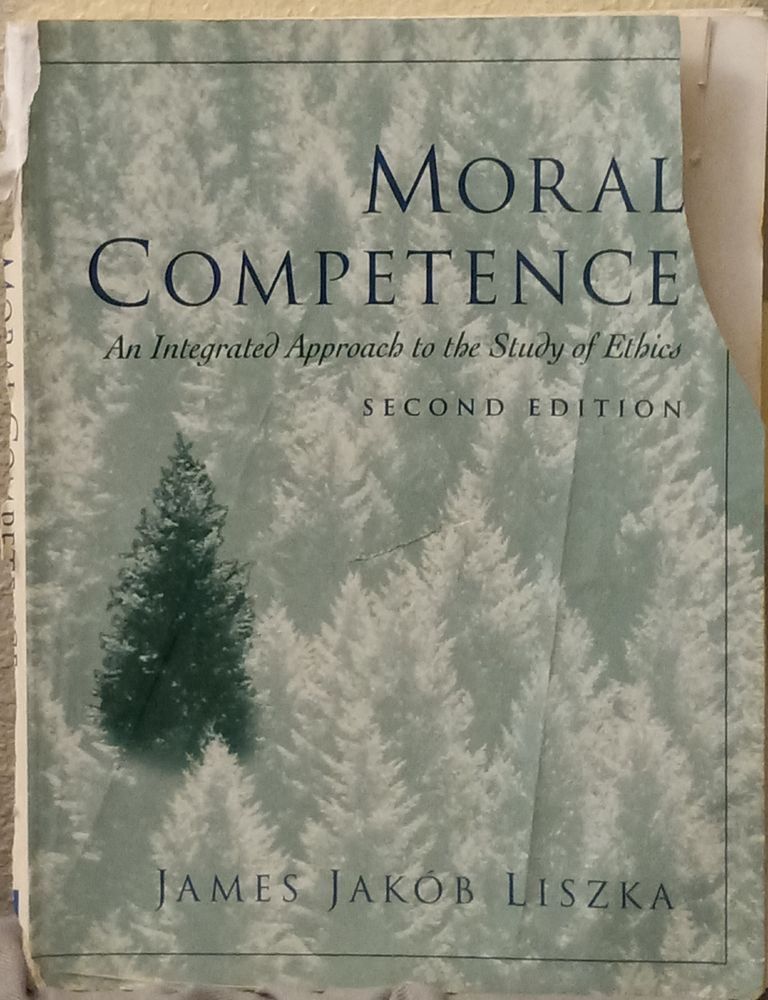
Title: Moral Competence, an integrated approach to the study of ethics. Second edition. Author James Jakob Liszka. The cover picture is of numerous pine trees in white and gray (?) and there is one tree fully dark green. This is an oldish used book, fully used, coming apart at the binding.
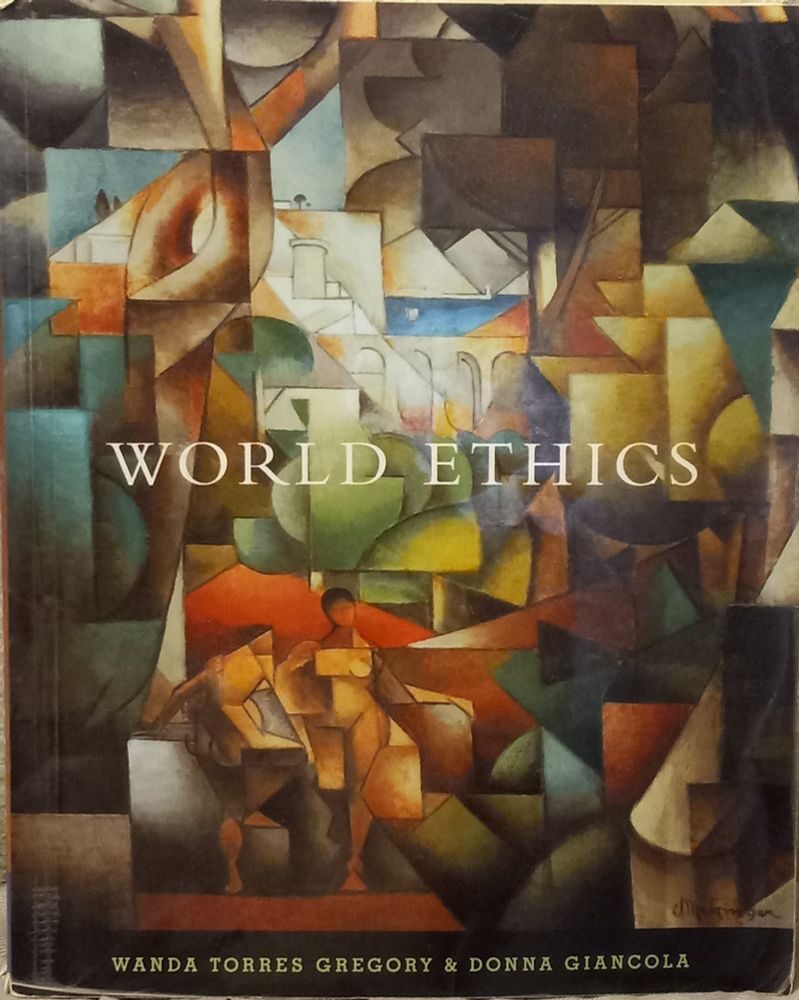
Title: World Ethics. Editors: Wanda Torres Gregory & Donna Giancola. The cover is a set of mostly straight-lined shapes, some curved also. Within some of the shapes we see a bridge, two people, trees. Maybe other stuff. This is an oldish book, used, and the cover is wearing out.

Title: The Moral Life, an introductory reader in ethics and literature. Editors: Louis P. Pojman, Lewis Vaughn. Also on the cover: Fifth Edition, Oxford University Press. The picture on the cover is a person looking at you. (Like the other two books the artwork is essentially uncredited.) Like the other two book this is an oldish textbook.
💙📚
#bookchallenge
#booksky
1/ We notice, meet, read about, hear about person after person who think they're doing the right things for themselves and/or some others, at least thinking they've got good reasons for what they did or are doing or are going to do:
02.07.2025 02:35 — 👍 2 🔁 0 💬 3 📌 0
![Title: Unto Others [but all caps, color red, "Others" itself placed in a red rectangle]. Subtitle: The Evolution and Psychology of Unselfish Behavior [all small caps]. Authors: Elliott Sober and David Sloan Wilson. There's an image of a tilted face with apparently a single tear on cheek, eyes mostly closed, hair or cloth atop a blockish thing resembling truncated bowling pin sort of human body like - ish. Also, there's a ladder with some bald person reaching (?) toward the tear on cheek. It seems we came into this life, and also we evolved more into this life, understanding it's natural sometimes to (ultimately, not instrumentally) want to help, to want others to fare well, and to want to do epistemically justified good. Psychological altruism is factual and perceptible. And it's normative: it should be, and ethical altruism too is well-evidenced. It's plausible that "psychological altruism [is] part of the architecture of the human mind". [205] This, so to speak, is logically and reasonably inferred.](https://cdn.bsky.app/img/feed_thumbnail/plain/did:plc:y243snnbr5aopb2qchp3g7ju/bafkreieu23pgoqbkb2xit3fap5k3jhvge4k2cjwcwqfqvmpd3qkajttkue@jpeg)
Title: Unto Others [but all caps, color red, "Others" itself placed in a red rectangle]. Subtitle: The Evolution and Psychology of Unselfish Behavior [all small caps]. Authors: Elliott Sober and David Sloan Wilson. There's an image of a tilted face with apparently a single tear on cheek, eyes mostly closed, hair or cloth atop a blockish thing resembling truncated bowling pin sort of human body like - ish. Also, there's a ladder with some bald person reaching (?) toward the tear on cheek. It seems we came into this life, and also we evolved more into this life, understanding it's natural sometimes to (ultimately, not instrumentally) want to help, to want others to fare well, and to want to do epistemically justified good. Psychological altruism is factual and perceptible. And it's normative: it should be, and ethical altruism too is well-evidenced. It's plausible that "psychological altruism [is] part of the architecture of the human mind". [205] This, so to speak, is logically and reasonably inferred.
💙📚
#bookchallenge
#booksky
13.06.2025 15:46 — 👍 4 🔁 0 💬 0 📌 0

...developing a mind able to successfully live well among life's varieties and changes none of us start from nowhere and there are more or less supported axioms we eventually learn we process over and over throughout our lives, adding/subtracting/modifying/etc. Or not. Or somewhere in between. Yet at any point there's an answer we think is true and specific foundational values and interpretations and orientations holding us. Or not. But usually so.
💙📚
#bookchallenge
#booksky
08.06.2025 14:10 — 👍 5 🔁 0 💬 0 📌 0
![Title: The Ethics of Belief and Beyond, Understanding Mental Normativity. Edited by Sebastian Schmidt and Gerhard Ernst. Top green yellow dark green with "Routledge Studies in Epistemology". Middle white containing title. Bottom with blue rectangle: an "R" with "Routledge",curved part silhouette of human. That’s right, mental normativity: shoulds & shouldn’ts of what we do with our minds, of what our minds should/shouldn’t be. That’s right, think more not less. Think better not worse. To do: developing minds capable of excellently meeting our epistemic responsibilities, our epistemic goals, of instantiating epistemic virtues and avoiding epistemic vices, of producing greater perceptions and conceptions and insights, of regularly improving our capacities to make and understand distinctions, improving daily our capacities to distinguish true from false and distinguish degrees of probable (likely, plausible, feasible, possible, and other terms of evaluation) from improbable (ditto), of growing capacities and abilities of imagining and of thinking, of implementing and instantiating the morally best, most profound, most useful, most reasonable, most satisfying, most humane, set of cognitive values . . .We want, seek, and enjoy mental adventures, we want consequences of our abilities to excellently meet with complexities. This is, of course, not to establish a single focus for mentality, but, we claim, a most important one for us all. Ultimately it’s a profound and permanent balance we seek among memory, passion, … responsibility for our attitudes, reasonableness, rationality, blaming, fearing, deciding, fantasizing, mind-wandering, intentions, evolvings . . . [“Balance?”, you pause. My use of the word resonates with Indigenous sphere (literally, the geometric metaphor and literal meaning) of my Indigenous experience.] And always for best Earth-life for all. (Improving the Universe is where it’s at.) “Bite off more than we can chew!” Not true. Think and imagine again.](https://cdn.bsky.app/img/feed_thumbnail/plain/did:plc:y243snnbr5aopb2qchp3g7ju/bafkreigiass3xc7aziympruceo7wlsvbieqklsn2tjsk3a6rwz6etsohty@jpeg)


![Hardback. Spine cover: Collected Papers [of] Charles Sanders Peirce. [Volumes] V Pragmatism and Pragmaticism VI Scientific Metaphysics. [Publisher] Belknap Press Harvard. [Logo is a lion wearing a crown. Why? 1960 publication.] "...[G]rowth comes only from love...", "...by cherishing and tending [my ideas] as I would the flowers in my garden...this is the way mind develops". Thru interactions, life, travelers, brains of travelers, trying to develop minds, to willfully, pragmatically get ourselves beyond obstructions & twisted distortions that sickened some of us. Life and varieties, experiences, pragmatic interactions & involvements, operational pluralism, cognitive values, adaptations, flexibility, adjustments, readjustments. Challenge: we're fallible. Treatment: multanimity, pluralism, moral & epistemic good, democracy, comportement in daily life. Peirce reminds us things would "behave" generally, in general, in specific ways in the course of experience, according to a kind of critical common-sensism. Pragmaticists with minds open to learning to "distinguish accurately between truth and falsity, probability and improbability", because they recognize their thinking "lies in a conditional resolve" and also that learning the truth is the way to satisfy the wishes of our innermost. We're attentive to matters of "everyday facts which critical common-sensism takes into account". There is a "close affinity between thinking in particular and endeavour in general".](https://cdn.bsky.app/img/feed_thumbnail/plain/did:plc:y243snnbr5aopb2qchp3g7ju/bafkreighb2wxiqzbk4dcybrunch5fm3qzdvaf6snafnubqsep6xvyqdmcy@jpeg)
![Cheap paperback published in January 1959 by Bantam books. However, it was well-made; it was not glued; it was sewn. [It was a pleasure to read without the book falling into separate chunks.] The author's name: Simenon. (Remarkable in that only his last name is given.) Above the author's name is "Europe's most celebrated mystery writer". [More celebrated than Christie?] Underneath author's name: "Meet Inspector Maigret, the toughest, smartest, most relentless French manhunter of all time, in one of his greatest cases". Title: No Vacation For Maigret. There is a picture of a heavy set man with mustache, hat in right hand, handkerchief in left, black vest, white socks; presumably Maigret. [Doesn't look at all like the real Maigret, i.e., Bruno Cremer. That was a joke.] Overall, the cover is divided into one large square and two rectangles. The square is black with a splash of red blood. The left rectangle is a cityscape, a narrow street, a crowd of onlookers, a dead woman in a red dress laying on the street. [Not much relation to the story if memory serves.] The right white rectangle contains most of the above-mentioned figure of a man. Rectangle also contains the words "A Bantam Mystery" followed by Bantam's logo, picture of a bantam of course.](https://cdn.bsky.app/img/feed_thumbnail/plain/did:plc:y243snnbr5aopb2qchp3g7ju/bafkreibe7x5kfyvfboqf5awk4v5exc67zeypc2guu7jsyten4at36vbltm@jpeg)



![Paperback cover, a purplish yellow gold horizon, gray black water, larger and smaller sailboat, rocks on shore, someone in gray brown long coat and walking stick arriving, man in suit and hat greeting, two children playing, woman seated. The Mind of the Traveler: from Gilgamesh to global tourism. Author: Eric J. Leed. About this mind we should develop, in response to what, & what to do with it? Everyone is restless at the beginning of development, wanders around, curious. Vaguely enough, we travel thru interactions. Observations, size up a situation, interpretations, practical difficulties, practical reasoning, flexibility, appreciative of diversity, variety of what we experience, constant changes and differences, adaptations, adjustments, flexibility, re-adjustments, interpretations, adjudgment, appraisal, evaluation. "Conditions are never completely fixed...they are in process..." [Dewey] Necessary to see far, Alain suggests. The eye made to see horizon, starry nightsky, the far and wide. Hold perspective & the eye relaxes, mind & brain relax. There're some constants. Flexibility without instability, without insecurity. Most travel is hardly momentous. Sometimes intense-ish, as "arrival" indicates. Travel a mile, a million, see same things, stop here, there. Details. Same as always? They're new, more so. There's a sort of wandering requiring great flexibility, respect, appreciation, the humane, fortitude, enjoyment, delight, the humane. Byways, alleys, benches, persons, vulnerabilities, experiences, perspectives, constants, variables. Matured. Travel on in mind, broader skies, variety, interest, the this here, the that there, infinite in-betweens, us. Easy to get enthusiastic and grab for the sweeping upshots and worn words. Oh well. We try, don't we? Give it a shot.](https://cdn.bsky.app/img/feed_thumbnail/plain/did:plc:y243snnbr5aopb2qchp3g7ju/bafkreifwklq7cn62k5p5tvduao33anfhvtsj3owlmy4vnklplxsxrjzpz4@jpeg)

 11.07.2025 22:50 — 👍 1 🔁 0 💬 0 📌 0
11.07.2025 22:50 — 👍 1 🔁 0 💬 0 📌 0



![Hardback cover shades of brown, white, and yellowishness (?). Title: Modalities: Philosophical Essays. Author: Ruth Barcan Marcus. Picture in center square is of installation by Eva Hesse called "Contingent 1969". There are 8 panels cheesecloth, latex, fibreglass; National Gallery of Australia, Canberra. A particular concept from a few of the essays (primary focus logic by a venerable icon & mentor who passed on a little over a decade ago) leads to conceptions, articulation, construction of self distinct from rest of reality concerns the kind of person myself has to be IF there is to be any such person as myself. I can develop the essential attribution of being disposed in character "to act rightly [and not] merely act rightly out of expediency or the like", and of being disposed in mind to distinguish true (or the like) from false (or the like). The essential attribute is not artificial but it is constructed. It's physical property but not a "natural" one in the sense of being wholly individuative of what kind of thing I am. It's "partially definitive" of what kind of person I am. Constructed, not invented arbitrarily, henceforth necessary IF I am to be the kind of person I am. "Philosophical", not "natural", in that it involves choices about best way to live.](https://cdn.bsky.app/img/feed_thumbnail/plain/did:plc:y243snnbr5aopb2qchp3g7ju/bafkreibddkhrfjx766hndvya2kpzynaolhrgync6n4wygomzgusc4z6hsm@jpeg)

![Paperback mainly black cover. Author: Timothy Williamson. [In dark white shade.] Title: Modal Logic as Metaphysics. [In shades of blue.] "The cover design based on an idea by Miroslava Andjelkovic" says the back cover. [Is the design Miroslava's idea? Or is Miroslava's idea separate from the design?] The figure in different shades of gray or white is probably a combination of two logic symbols. The brighter shaded symbol resembling a 2-pronged anchor is probably what the ancients (from 1930s) called "fishhook". Doesn't seem to be used much anymore but its meaning (with different symbolizations) is ubiquitous: necessarily (strictly) implies. (Relevance: modal logics developed out of a focus on what's necessary and what's possible. Mathematics and Philosophy have been siblings for thousands of years, and it was the concern of one of the siblings to make sense of the other's typical way of thinking, to get clear exactly on why that way worked so well for understanding and doing things, such as figuring out the area of a truncated pyramid before we begin building one next to our river. "I mean, how many bricks are we looking at here Imhotep?" And then adapt the thinking to a general approach toward increasing our knowledge and understanding of many other areas of life. For example, Socrates using one tool to uncover ethical truths.) The relatively darker shaded figure seems to be the greek letter lambda. In this book, and typically a lot of formal places, lambda symbolizes an operation that keeps a variable open for input while we focus on a process, so to speak, or, perhaps in other words indicates a condition or a property. There are different ways of making sense of it. And what of the metaphysics part? Is what is essentially necessary (had to be) or not? And do not add anything specific or particular or concrete to that question. Observe it in its abstract glory. So to speak.](https://cdn.bsky.app/img/feed_thumbnail/plain/did:plc:y243snnbr5aopb2qchp3g7ju/bafkreifnwhy67hkmdsmtq4v25wncphq2h2m75ve5uj5pieurgckpckluqm@jpeg)





![Title: Unto Others [but all caps, color red, "Others" itself placed in a red rectangle]. Subtitle: The Evolution and Psychology of Unselfish Behavior [all small caps]. Authors: Elliott Sober and David Sloan Wilson. There's an image of a tilted face with apparently a single tear on cheek, eyes mostly closed, hair or cloth atop a blockish thing resembling truncated bowling pin sort of human body like - ish. Also, there's a ladder with some bald person reaching (?) toward the tear on cheek. It seems we came into this life, and also we evolved more into this life, understanding it's natural sometimes to (ultimately, not instrumentally) want to help, to want others to fare well, and to want to do epistemically justified good. Psychological altruism is factual and perceptible. And it's normative: it should be, and ethical altruism too is well-evidenced. It's plausible that "psychological altruism [is] part of the architecture of the human mind". [205] This, so to speak, is logically and reasonably inferred.](https://cdn.bsky.app/img/feed_thumbnail/plain/did:plc:y243snnbr5aopb2qchp3g7ju/bafkreieu23pgoqbkb2xit3fap5k3jhvge4k2cjwcwqfqvmpd3qkajttkue@jpeg)
